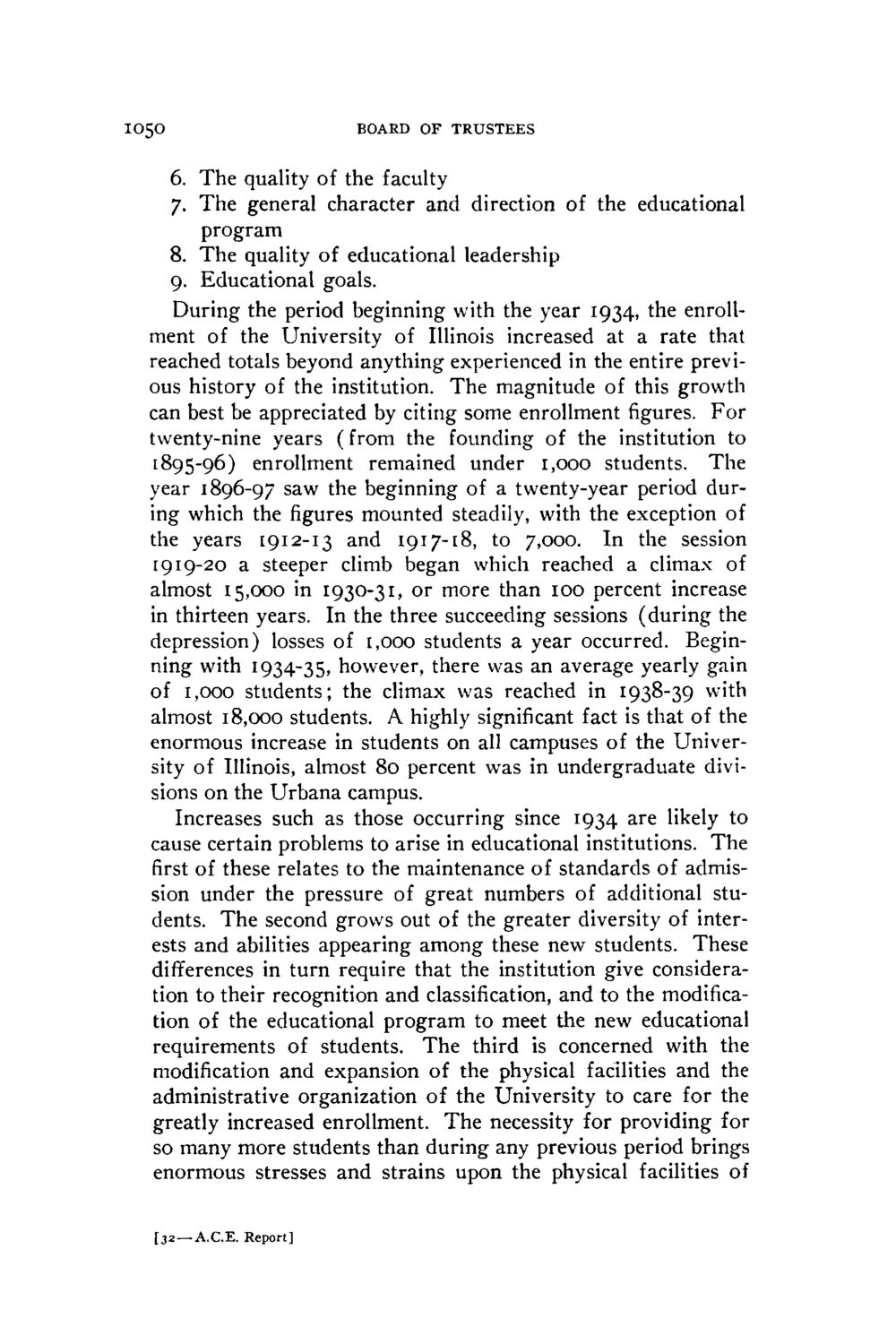| |
| |
Caption: Board of Trustees Minutes - 1944
This is a reduced-resolution page image for fast online browsing.

EXTRACTED TEXT FROM PAGE:
1050 BOARD O F T R U S T E E S 6. The quality of the faculty 7. The general character and direction of the educational program 8. The quality of educational leadership 9. Educational goals. During the period beginning with the year 1934, the enrollment of the University of Illinois increased at a rate that reached totals beyond anything experienced in the entire previous history of the institution. The magnitude of this growth can best be appreciated by citing some enrollment figures. For twenty-nine years (from the founding of the institution to 1895-96) enrollment remained under 1,000 students. The year 1896-97 saw the beginning of a twenty-year period during which the figures mounted steadily, with the exception of the years 1912-13 and 1917-18, to 7,000. In the session 1919-20 a steeper climb began which reached a climax of almost 15,000 in 1930-31, or more than 100 percent increase in thirteen years. In the three succeeding sessions (during the depression) losses of 1,000 students a year occurred. Beginning with 1934-35, however, there was an average yearly gain of 1,000 students; the climax was reached in 1938-39 with almost 18,000 students. A highly significant fact is that of the enormous increase in students on all campuses of the University of Illinois, almost 80 percent was in undergraduate divisions on the Urbana campus. Increases such as those occurring since 1934 are likely to cause certain problems to arise in educational institutions. The first of these relates to the maintenance of standards of admission under the pressure of great numbers of additional students. The second grows out of the greater diversity of interests and abilities appearing among these new students. These differences in turn require that the institution give consideration to their recognition and classification, and to the modification of the educational program to meet the new educational requirements of students. The third is concerned with the modification and expansion of the physical facilities and the administrative organization of the University to care for the greatly increased enrollment. The necessity for providing for so many more students than during any previous period brings enormous stresses and strains upon the physical facilities of [32 —A.C.E. Report]
| |